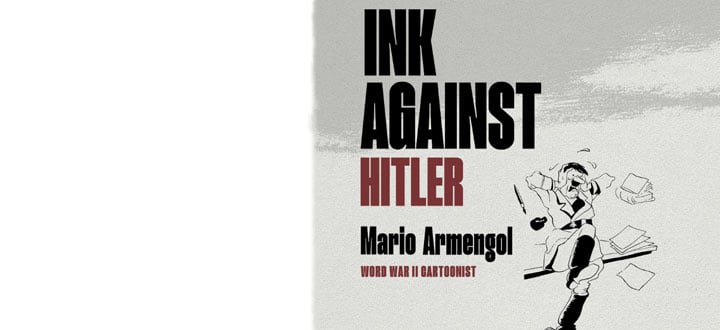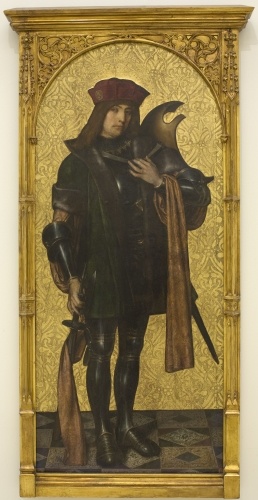Chronological context

By the start of the sixteenth century, the Renaissance model was the dominant style in the city-states of northern Italy and Rome, which were the epicentre of the new culture. The spread of the new model took a different course in Catalonia, and many figurative innovations were adopted only superficially, in such a way that late Gothic models, which were still highly regarded by patrons and public, lingered on. Many of these minor innovative changes were led by artists from outside Catalonia, who were willing to incorporate a more varied typological and compositional repertoire. As a result, artists increasingly adopted an eclectic language, embracing aspects of different stylistic movements, an eclecticism that should be regarded not as a limitation but as a symptom of creative vitality.
|
Ayne Bru, Martyrdom of Saint Cucuphas, 1502-1507 |
Ayne Bru, Saint Candidus, 1502-1507 |
Historians coined the term Golden Age to refer to a period – the seventeenth century – characterized by a change in the role of Spanish artists within the European context. Although these masters had attained a very high level of skill, the hegemony of Classicism relegated them to the periphery of the art system, and their contribution was dismissed as minor and irrelevant because they tended towards a naturalism far removed from canonical idealism. However, the modern rediscovery of painters such as Velázquez, Zurbarán or Ribera marked a radical change: their creativity began to be recognized and became a focus of interest for European scholars, who drew attention to their originality and contribution to the shaping of a European Baroque model which had found a counterpoint and stimulus in the Spanish school: the mystical vision as cultural stereotype.
|
Jusepe de Ribera, Martyrdom of Saint Bartholomew, 1644 |
Francisco de Zurbarán, Saint Francis of Assisi according to Pope Nicholas V's Vision, circa 1640 |
In search of a painter: Velázquez or Ribalta?
Most works done before the modern age do not usually include the painter’s signature. This absence has a bearing on the group associated with Diego Velázquez, one of the most emblematic in the collection. The museum conserves an unsigned Saint Paul that, through obvious stylistic similarities with other works by Velázquez in his youth, from the painter’s period of activity in Seville, prior to his move to the court in Madrid, leaves no room for doubt about its authorship.
The two other paintings are more controversial and the experts do not agree on establishing authorship. In the supposed portrait of the philosopher and theologian Ramon Lull a paradox arises. While the work’s formal characteristics, very marked in the facial features and the painting, point to Velázquez, or to some painter close to his circle, contemporary documentation and an inscription on the back determine that the painter is Francesc Ribalta. The same name also crops up in the post-mortem inventory of goods of the Marquis of Carpio, a seventeenth-century nobleman and the work’s previous owner. However, no other work by Ribalta comes so close stylistically.
For Saint John the Evangelist on the Island of Patmos, as well as being attributed to Velázquez, experts include other great names in Spanish painting of the period. At the moment, an uncertain authorship is indicated that should be placed in Andalusia. There is also the possibility that it was a copy, of undeniable quality, made from a model of the period, lost or destroyed.
|
Diego Velázquez, Saint Paul, circa 1619 |
Francesc Ribalta, Ramon Llull, circa 1620 |
Anonymous, Saint John the Evangelist in Patmos, 1616-1625 |
The horizon of this period in Catalonia is marked by artistic continuity and the use of autochthonous compositional formulas and treatments as a result of the predominance of local craftsmen, who used prints in their work. This prevalence of the local did not exclude a degree of openness to other figurative influences, and in this context Antoni Viladomat is an essential figure for any understanding of the persistence of devotional models well into the eighteenth century. Thanks to his mastery of these hegemonic models, Viladomat established a reputation as an artist of reference and came to be the most sought-after painter of his time.
Towards the end of the eighteenth century the panorama became more diverse and was enhanced by the appearance of painters such as Francesc Pla ‘el Vigatà’, highly regarded specialists who decorated the walls of the new palaces then being built by the wealthy aristocrats.
|
Antoni Viladomat, Bernat de Quintaval Distributes his Riches to the Poor, circa 1729-1733 |











